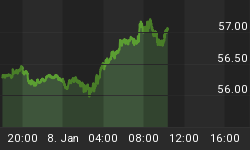But it is a lousy leading indicator. For example, in 1990:Q1, real GDP increased at an annual rate of 4.70% quarter-to-quarter -- its fastest growth since 5.38% in 1988:Q4. But, as Chart 1 shows, sequential quarterly real GDP did not attain annualized growth of 3-1/2% or higher until 1992:Q1.
Chart 1
Quarter-to-quarter annualized real GDP growth hit 4.77% in 1994:Q4. As shown in Chart 2, real GDP growth did not surpass 3-1/2% until 1996:Q2.
Chart 2
Quarter-to-quarter annualized real GDP growth hit 6.43% in 2000:Q2. As shown in Chart 3, it did not surpass 3-1/2% until 2003:Q2.
Chart 3
All of which brings us to the advance estimate of 4.82% real GDP growth in 2006:Q1. Is this the harbinger of continued solid growth in excess of 3-1/2% or the swan song for such growth? I'm placing my bets on swan song. The reason is that just like 1990:Q1, 1994:Q4 and 2000:Q2, my proprietary real GDP forecasting model, which, by definition incorporates leading indicators of economic activity, is now signaling slower economic growth ahead - in fact, considerably slower growth.
Chart 4 shows the year-over-year growth in actual real GDP along with the year-over-year growth in real GDP as forecasted by my proprietary model. The shaded areas in the chart are the quarters of relative peaks in quarter-to-quarter real GDP growth as discussed above. The (blue) line is the forecasted year-over-year real GDP growth. The model gives a forecast two quarters ahead. So, at each of these relative peaks in actual real GDP growth, the model was forecasting that the growth would be moderating in the two quarters ahead. As of right now, the model is forecasting that by 2006:Q3, year-over-year real GDP growth will be about 3% vs. 3.5% as of 2006:Q1. This implies that annualized real GDP growth quarter-to-quarter will average about 2.7% over the next two quarters vs. its 3.2% average over the past two quarters.
Chart 4
Both in the minutes to the March 28 FOMC meeting and in Chairman Bernanke's April 27 testimony to the Joint Economic Committee, the message was communicated that the Fed expects real GDP growth to moderate from its blistering pace set in 2006:Q1. I doubt seriously if the Fed's forecasting model bears much resemblance to mine. But both are sending the same message - economic growth is set to slow. And the policy implication is that the FOMC is set to pause after one more 25 basis point funds rate hike on May 10.
















